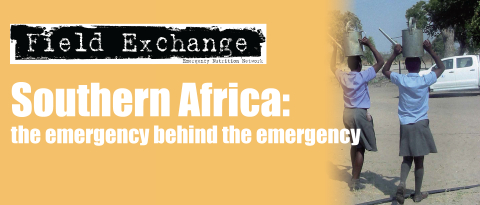Evaluation of WFP relief operations in Angola
Summary of evaluation1
The World Food Program mes's (WFP) assistance in Angola has alternated between relief and recovery since the mid-1970s. To date, nine emergency operations (EMOPs) and six protracted relief and recovery operations (PRROs) have been implemented by the WFP in Angola. Following the peace agreement in April 2002, WFP interventions continued to be of an emergency nature. In 2004, as the number of food-insecure and highly vulnerable people declined significantly, WFP began to focus on recovery operations in the highly food-insecure regions. The sharp decline in donations and the absence of government funds for recovery obliged WFP to reduce its coverage of most programmes. WFP began to concentrate on refining vulnerability analyses and implementing recovery activities rather than implementing relief activities. Currently, WFPhas reduced its humanitarian assistance in Angola, focusing increasingly on consolidating its efforts and shifting responsibilities to national authorities.
WFP has evaluated the three most recent PRROs implemented from January 2002 to December 2004, as well as five Special Operations (SOs) implemented to assist the PRROs achieve their objectives.
Key findings
Emergency food distribution, and medical and social feeding programmes contributed to WFP's objectives of saving lives, improving nutritional status, and preventing malnutrition. WFP's interventions contributed to nutrition objectives primarily by reducing acute rather than chronic malnutrition. The operations were generally efficient reaching large numbers of beneficiaries despite some delays and gaps. Concentrating efforts in the central highlands was appropriate for improved efficiency.
Many food for work and food for asset activities satisfied needs for infrastructure, but were mostly undertaken in exchange for labour instead of constituting activities to improve livelihoods.
School feeding offered an opportunity for broader community participation in development, reconciliation, improving attendance and addressing nutritional concerns. Activities were hampered by weak government support, lack of funds and technical capacity of implementing partners, and competing educational priorities.
WFP contributed considerably to enriching humanitarian coordination with the other United Nations (UN) agencies, governmental agencies, non-governmental organisations (NGOs) and donors. However, it made little progress in linking short-term emergency relief measures with longer-term recovery efforts. The marginal involvement of the government and its weak financial and technical engagement severely limited the potential of WFP's activities to contribute to sustainable recovery.
Overall, targeting methods im- proved and vulnerability analysis and mapping data (VAM) were used for geographical targeting, but were not used systematically for beneficiary selection in particular areas. The monitoring and evaluation system improved in terms of efficient data collection and storage, but operated separately from VAM and reported primarily on outputs rather than on outcomes.
WFP sought to ensure beneficiary protection, but the task became increasingly complex, involving prevention of discrimination in aid programmes, ensuring access to basic services and protecting land tenure and property rights. Recovery activities involved women, but failed to reflect their priorities for literacy, skills training and income generation. Moreover, gender imbalances in decision-making bodies and the special needs of female-headed households were neglected.
Key lessons included the following;
- In order to cultivate responsibility and ensure the ownership of results, partnership agreements must be based on joint objectives of WFP and its partners.
- Monitoring and Evaluation (M&E) and reporting can be labour-intensive and costly. Clarifying staff responsibilities and allocating sufficient budget at the start of operations will help ensure proper M&E.
- With better planning, and more consistent, timely and accurate monitoring of both food rations and the nutritional status of the beneficiary populations, it is most likely that the pellagra outbreak in Kuito could have been prevented. The experience could be useful in preventing similar situations in the future.
- Without adequate information on gender, and a thorough gender analysis of beneficiaries and relief recovery, WFP's task of supporting the Enhanced Commitment to Women is rendered impossible.
1Full and summary reports of the Evaluation of the Angola Relief and Recovery Operations are available at: http://www.wfp.org/operations/evaluation
Imported from FEX website


